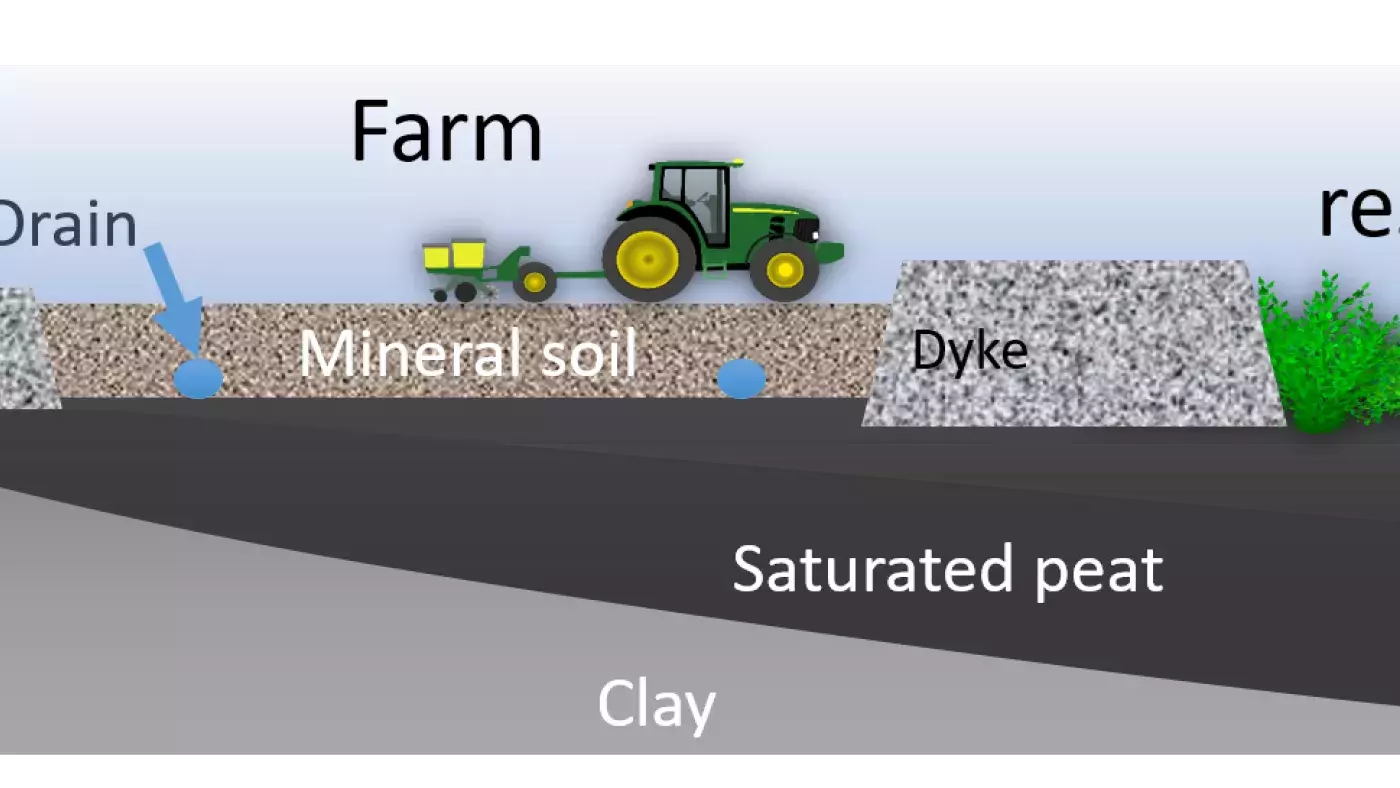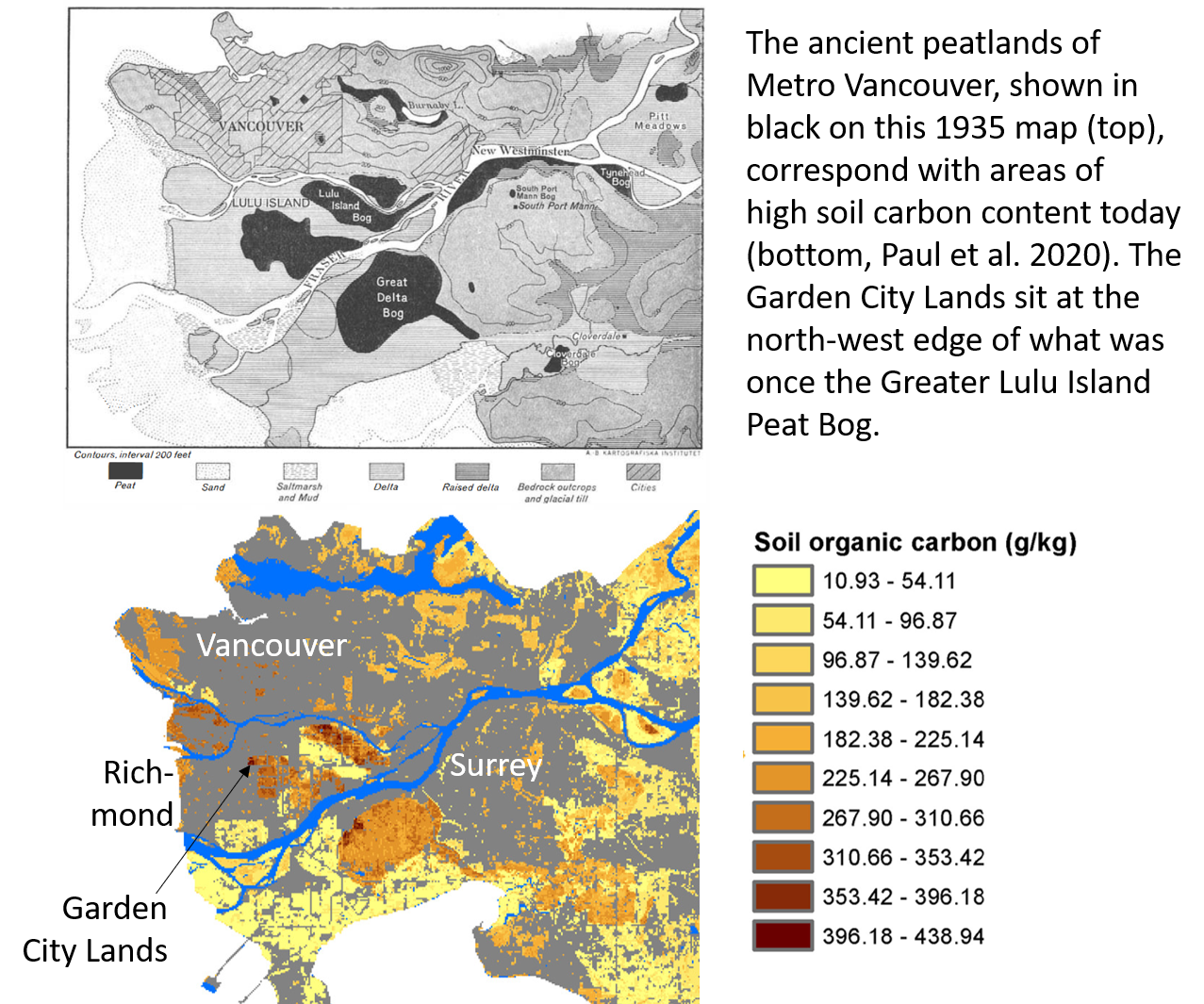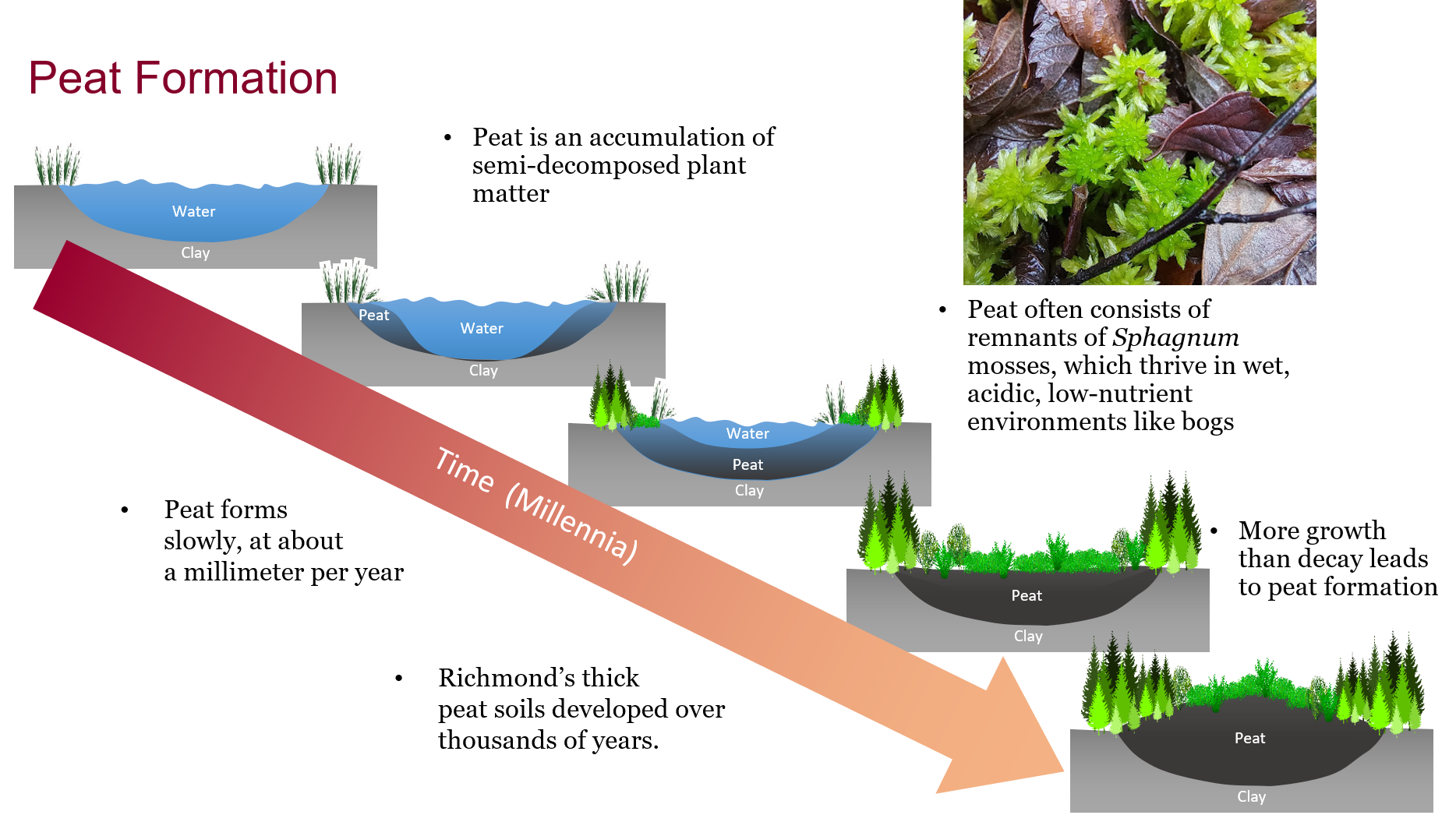

An innovative approach to urban farming at the edge of an ancient peat bog retains long-sequestered carbon while pulling even more carbon from the atmosphere
Carbon-smart farming at the Garden City Lands
The Garden City Lands sit at the western edge of the Greater Lulu Island Peat Bog. Peat soils store a vast amount of carbon: A meter of peat can store three times as much carbon as an equivalent area of rainforest. The peat soils of Richmond's Greater and Lesser Lulu Island Bogs, along with those of Burns Bog, south of the Fraser River, represent the greatest concentration of soil carbon in the Fraser Valley.

The Garden City Lands are in the Agricultural Land Reserve but the site was not farmed before 2018. Musqueum people controlled vegetation in the area with controlled burns, which fostered a rich harvest site for wild berries. Sphagnum mosses and other acid-loving bog plants grew on the wet, acidic peat. When they died they added to the peat, building a slow-growing layer of carbon-rich material.

Canada's federal government took possession of the Garden City Lands in the late 19th century, using them for a public firing range, military training grounds, and a site for maritime navigation towers. The site began to dry due to ditched roads built along its perimeter and a system of dykes and pumps designed to drain Lulu Island for farming and habitation. Fires became common in the Lulu Island's dry peat soils, inspiring the opening lines of E. Pauline Johnson's last poem, The Ballad of Yaada (1913). The City of Richmond bought the site from the federal government in 2010.